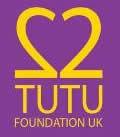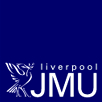|
|
Pioneers and Firsts in Science As the Science Museum pays tribute to the world’s great scientists and inventors, BHM reveals the people behind some of the most life-changing inventions and discoveries in scientific history. |
Charles Henry Turner
(1867-1923)
Charles Henry Turner was an African American scientist who dedicated his life to entomology, the branch of zoology concerned with insects. He was born in Cincinnati, Ohio, America, on 3 February 1867. His parents had been slaves but were freed at the end of the American Civil War. In 1889, he became the only black man in the college and received his B.S. and later, his M.S. from the University of Cincinnati, before going on to receive a Ph.D in zoology from the University of Chicago. This was an astonishing achievement for an African American of that time. As well as his love of entomology, Charles fought to give homeless and other black people better lives, right up to his death on 25 May 1923.
|
|
Benjamin Banneker
(1731-1806)
Benjamin Banneker was a brilliant astronomer and mathematician. Benjamin Bannaky, born in Maryland, America, on 9 November 1731 was taught to read and write by his English grandmother, Molly, who used her bible as a lesson book.
At the age of 57, Benjamin taught himself complicated maths, such as geometry, algebra and trigonometry, and the astronomy he needed to become an astronomer. From his studies of the stars, Benjamin found lots of mistakes in current astronomy books, so he put together his own astronomy tables and wrote an almanac, often contradicting the forecasts of prominent astronomers of that time. Around this time Benjamin was also enlisted to help draw the designs for the capital city of America, Washington D.C. |
|
Elijah McCoy (1844-1929)
Elijah was born in Colchester, Ontario, Canada on 2 May 1844. As a young boy, he was fascinated with his father’s machines and tools and studied mechanical engineering in Scotland.
After finishing his studies, Elijah returned to the United States as a fully-fledged engineer and mechanic, but he couldn’t find any work, so he became a fireman in Michigan.
During this time Elijah set about developing a lubricating cup that would automatically drip oil onto the moving parts of the train, without having to stop the train. In 1872, he received his first patent for his ‘oil cup’ which was soon used on engines, train locomotives, steamships, ocean liners and factory machinery. Because his oil cup was extremely reliable, buyers would always ask for the ‘real McCoy.’ He also patented the portable ironing board after his wife wanted an easier way of ironing clothes. Elijah died in 1929. |
|
George Washington Carver
(1731-1806)
George was born in 1864, Missouri, America. Although slavery had been abolished, the school nearby would not allow George to study there so George went to a school in Neosho, Missouri. Later, George wrote lots of letters to different colleges but they wouldn’t let him in because he was African American. Finally, at the age of 30, he was accepted at a college in Iowa. There he studied plants (botany), chemistry, animals (zoology) and insects (entomology). When he finished college, George began to teach science at a college called the Tuskegee Institute. George devised ways to help farmers crop rotation, developing over 300 products that could be made from peanuts, including cheese, milk, coffee, flour, ink, and soap. Many famous scientists and inventors wanted to give George a job, including Thomas Edison, who offered him a hundred thousand pounds to come and work for him, and Henry Ford. George did not accept any of these offers and stayed at Tuskegee for the rest of his life. George died on 5 January 1943.
|
|
Charles Richard Drew
(1904-1950)
If you or someone you love has ever needed a blood transfusion it is Charles Richard Drew you have to thank for the processes that have made it possible. He is the father of the blood bank. He was born in Washington D.C. in 1904. Using his sporting prowess to gain a scholarship, he went to Amherst College in Massachusetts and in 1934 he graduated second in a class of 137 with a Master of Surgery and Doctor of Medicine Degree.
Charles found out that if you separate the red blood cells from the plasma you can store the plasma separately, and it lasts much longer that whole blood. Because he was the expert, he was asked by the American Red Cross and the R.A.F in Britain to lead the initiative to get much needed blood from the USA to American and British soldiers. |
|
Dr Katherine G Johnson (1918-retired)
Dr Katherine G Johnson is still alive, but retired now. She is considered one of the pioneers of the American space movement. She was born in West Virginia in 1918. She went to the Langley Research Centre and became part of a pool of mathematicians. Langley Research where all the cutting edge technology goes on for NASA today and soon Katherine was transferred to the NASA flight research program.
Using simple paper and pencils Katherine calculated many complex algebraic equations and interplanetary trajectories. As a member of NASA’s historic 1961 team Katherine’s calculations placed the USA’s first astronaut, right on target, and she charted the course for John Glenn in 1962 and for Neil Armstrong, the first man to walk on the moon in 1969. She retired in 1986. |
|
Daniel Hale Williams
(1858-1931)
Daniel Hale Williams was the first doctor to perform open heart surgery successfully. Daniel Williams was born on 18 January 1856, in Hollidaysburg, Pennsylvania. He studied at Chicago Medical School, Illinois, and practised in Chicago, at a time when there were only three other African Americans practising medicine. Daniel became a skilled surgeon but he was always aware of the limited opportunities available to black doctors, so he set about opening up his own hospital. On 4th May 1891, Provident Hospital opened its doors. During one operation, Williams made the decision to open the patient’s chest and he performed a new type of surgery (which we now know as open heart surgery. He died in 1931. |
|
|
|



